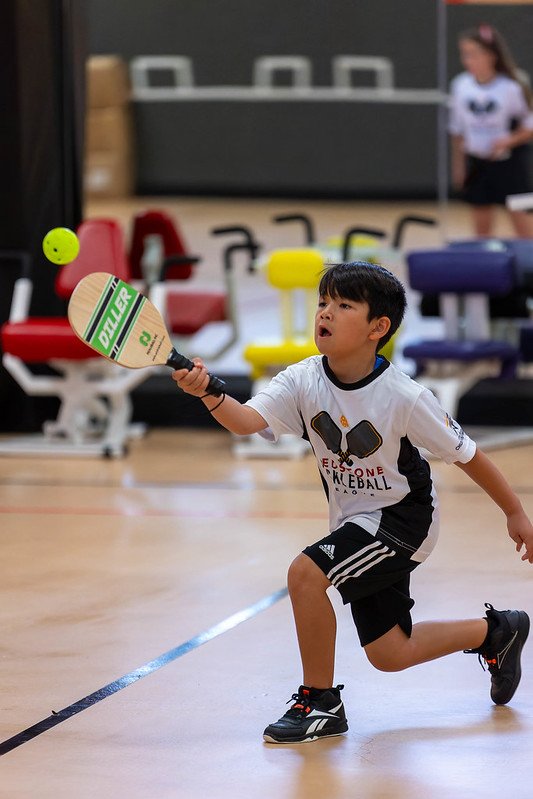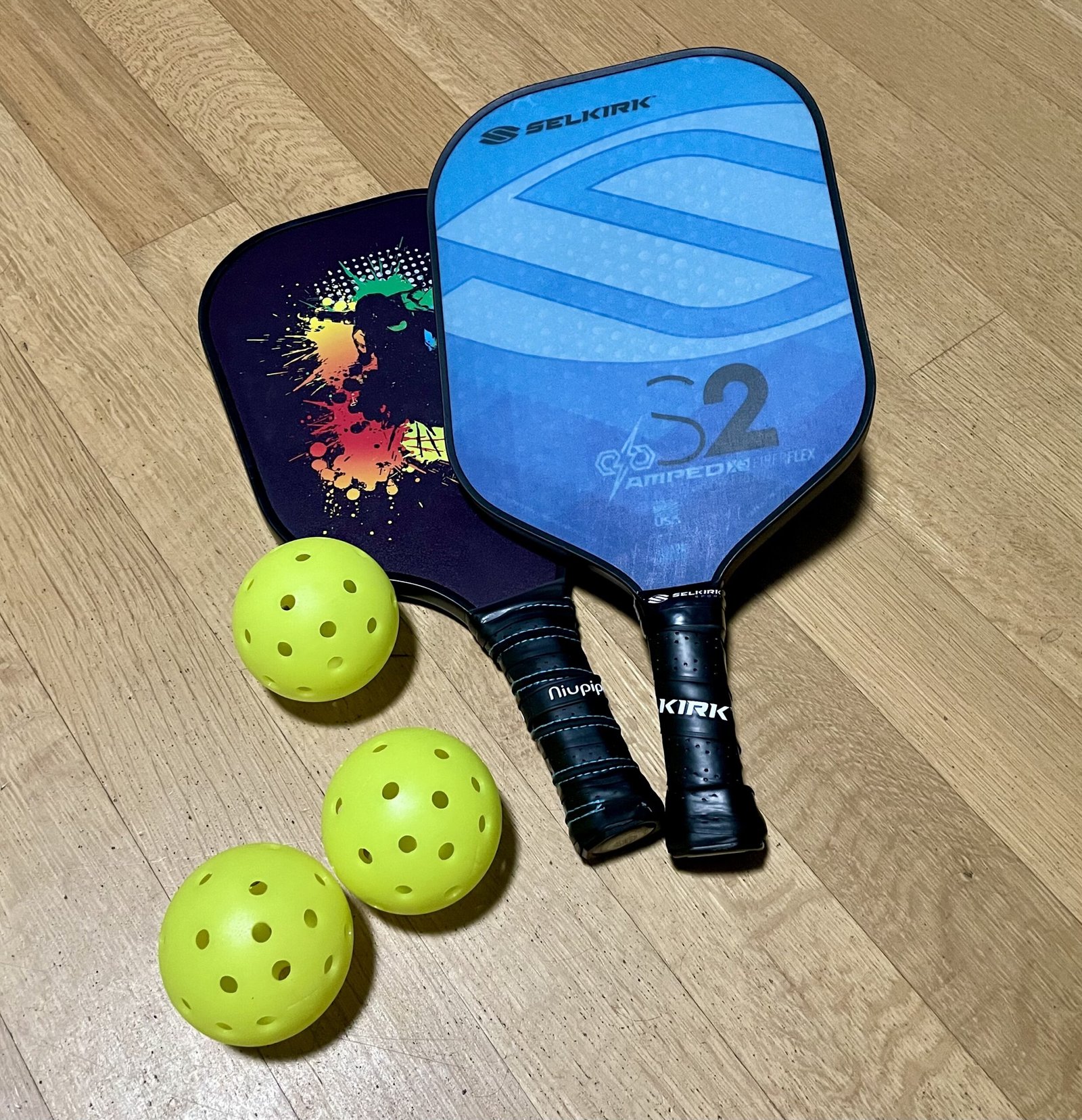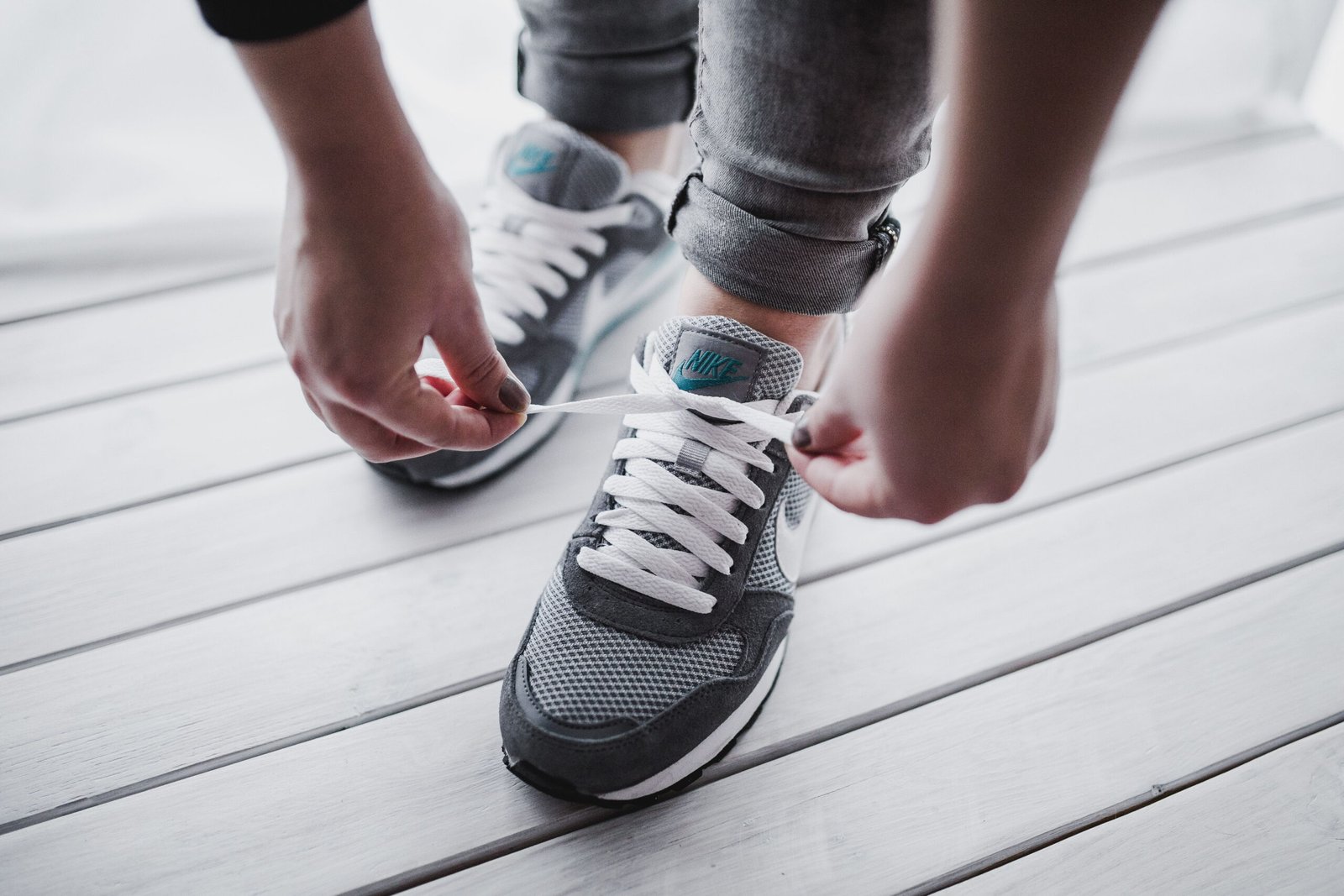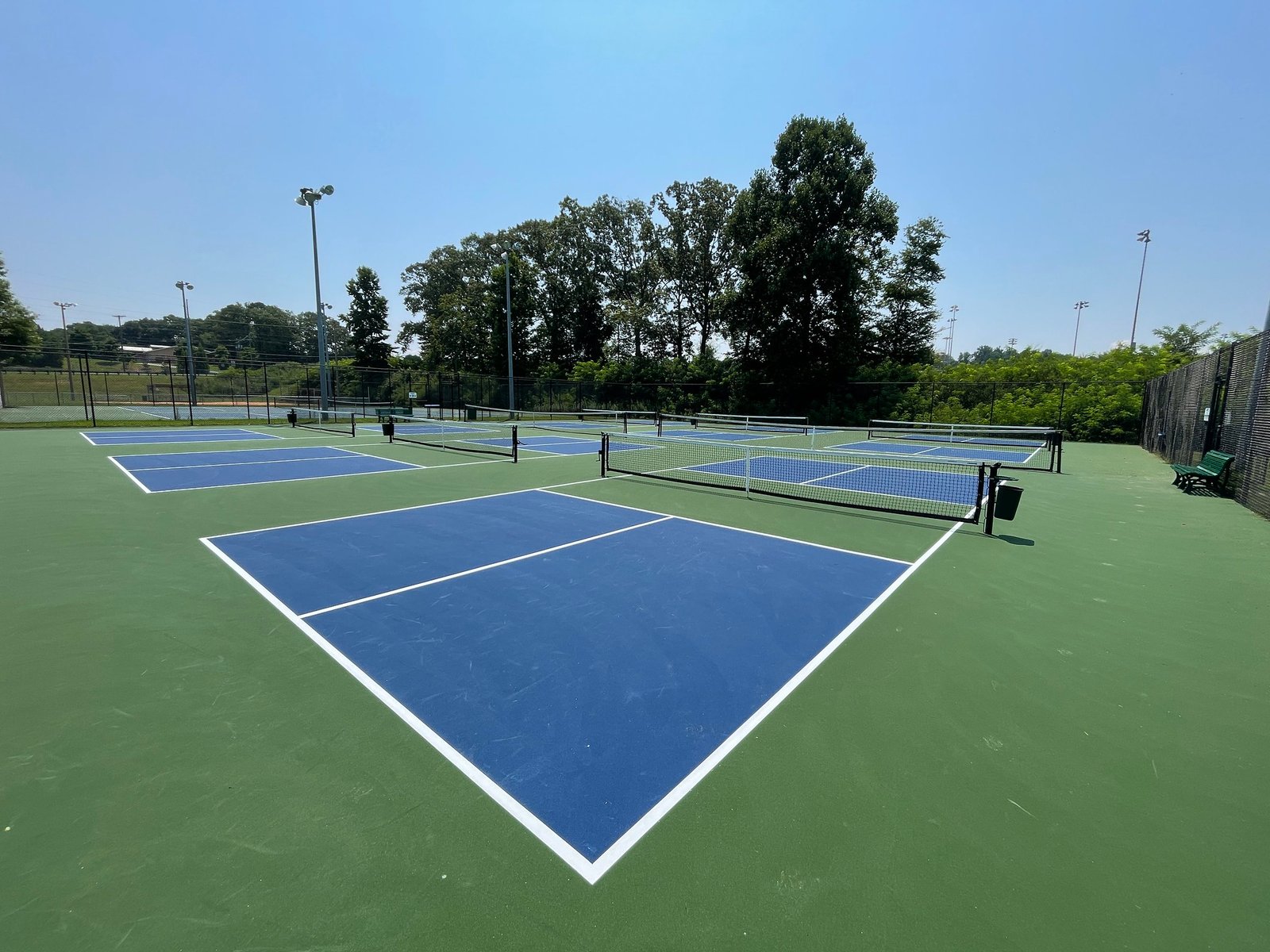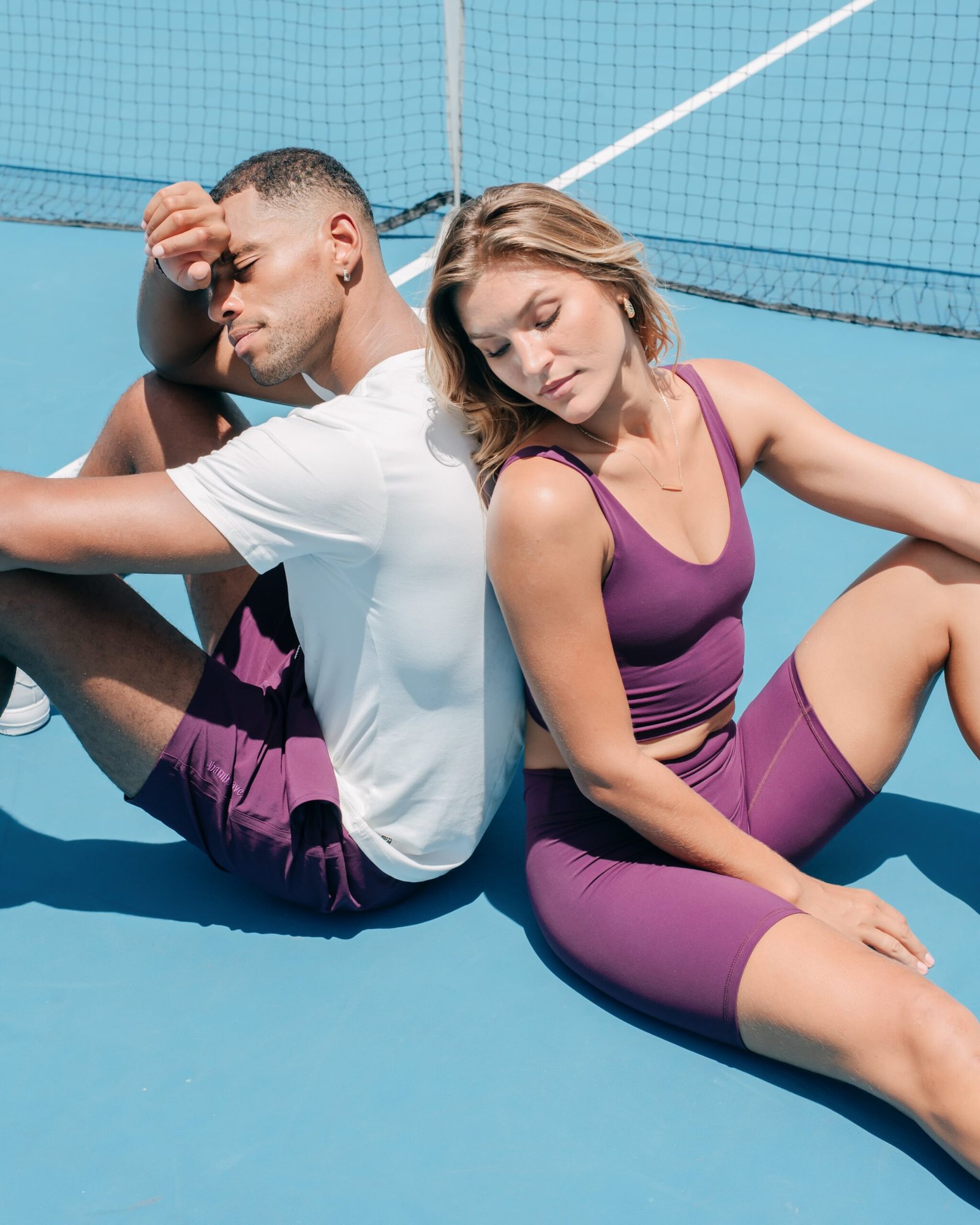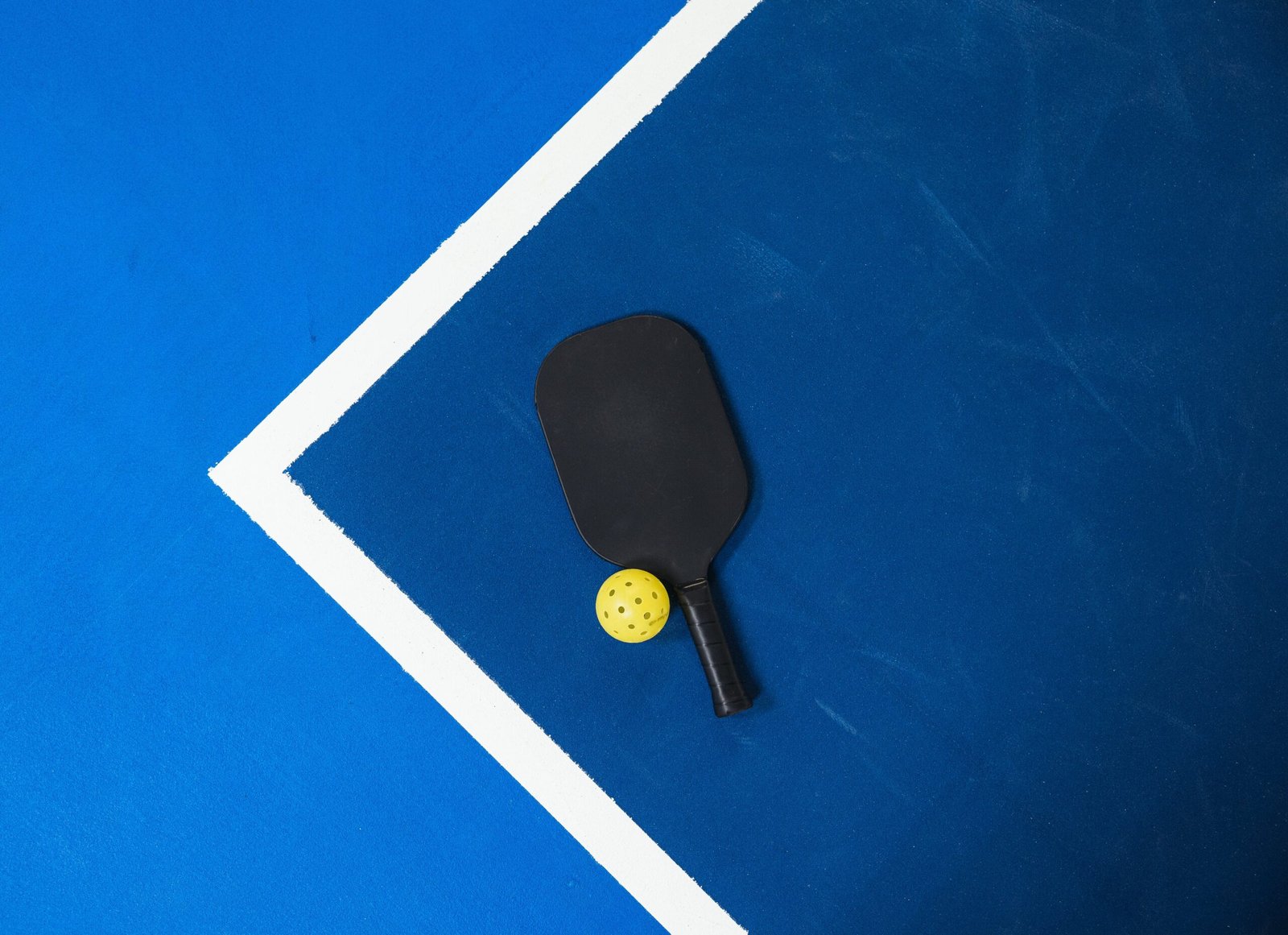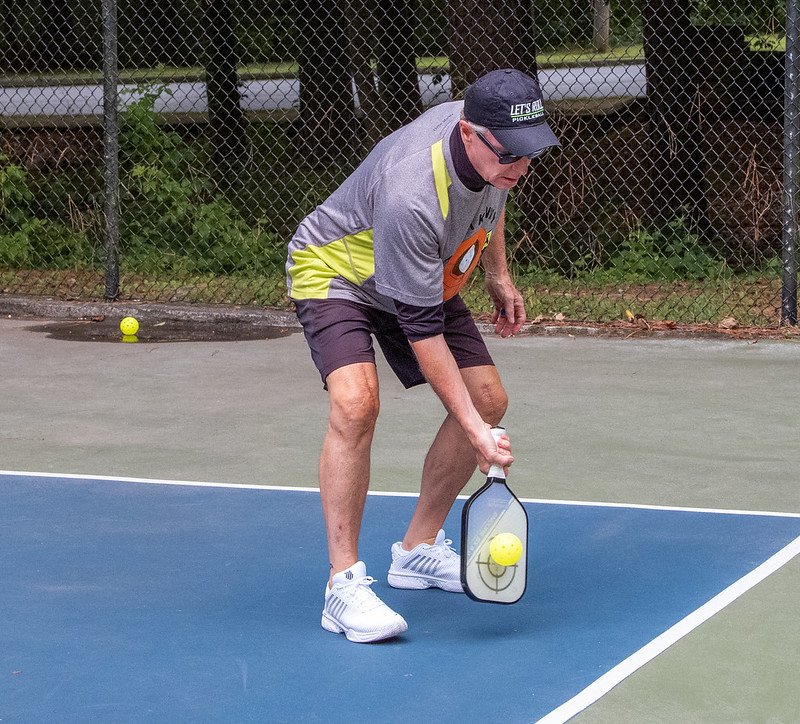Welcome to the exhilarating world of pickleball, a dynamic and rapidly growing sport that combines elements of tennis, badminton, and table tennis. Whether you are a seasoned athlete or a newcomer to racket sports, choosing the right pickleball paddle is a pivotal decision that can significantly impact your performance on the court. In this comprehensive guide, we’ll navigate through the key factors to consider, providing you with the insights needed to make an informed and satisfying choice.
At the heart of every pickleball paddle is its core material, influencing the feel and responsiveness of each shot. Options such as polymer, Nomex, and aluminum cores offer distinctive characteristics, catering to players with varying styles and preferences. The face material, ranging from lightweight graphite to versatile composite blends, further contributes to the paddle’s performance, striking a delicate balance between power and control.
Weight is a critical factor that dictates the overall playability of a paddle. Lighter paddles deliver enhanced maneuverability, making them ideal for finesse players, while heavier counterparts provide additional power, catering to those who prefer a more aggressive playing style. Your grip size, measured by the circumference of your hand, ensures comfort and control during gameplay. Choosing the appropriate grip style, whether cushioned or tacky, complements your playing conditions and personal comfort.
Paddle shape, edge guard design, and face texture all play integral roles in the paddle’s performance and durability. Whether you opt for a wide body, teardrop shape, or a standard design, understanding these nuances allows you to select a paddle that aligns with your playing preferences. Additionally, considering the noise level produced by the paddle is essential, particularly if you play in areas with specific regulations.
As you embark on your pickleball journey, this guide aims to empower you with the knowledge needed to make a well-informed decision when selecting your pickleball paddle. With the right paddle in hand, you’ll be ready to step onto the court with confidence, agility, and the ability to unleash your best game.
Table of Contents
How do I know what size pickleball paddle I need?
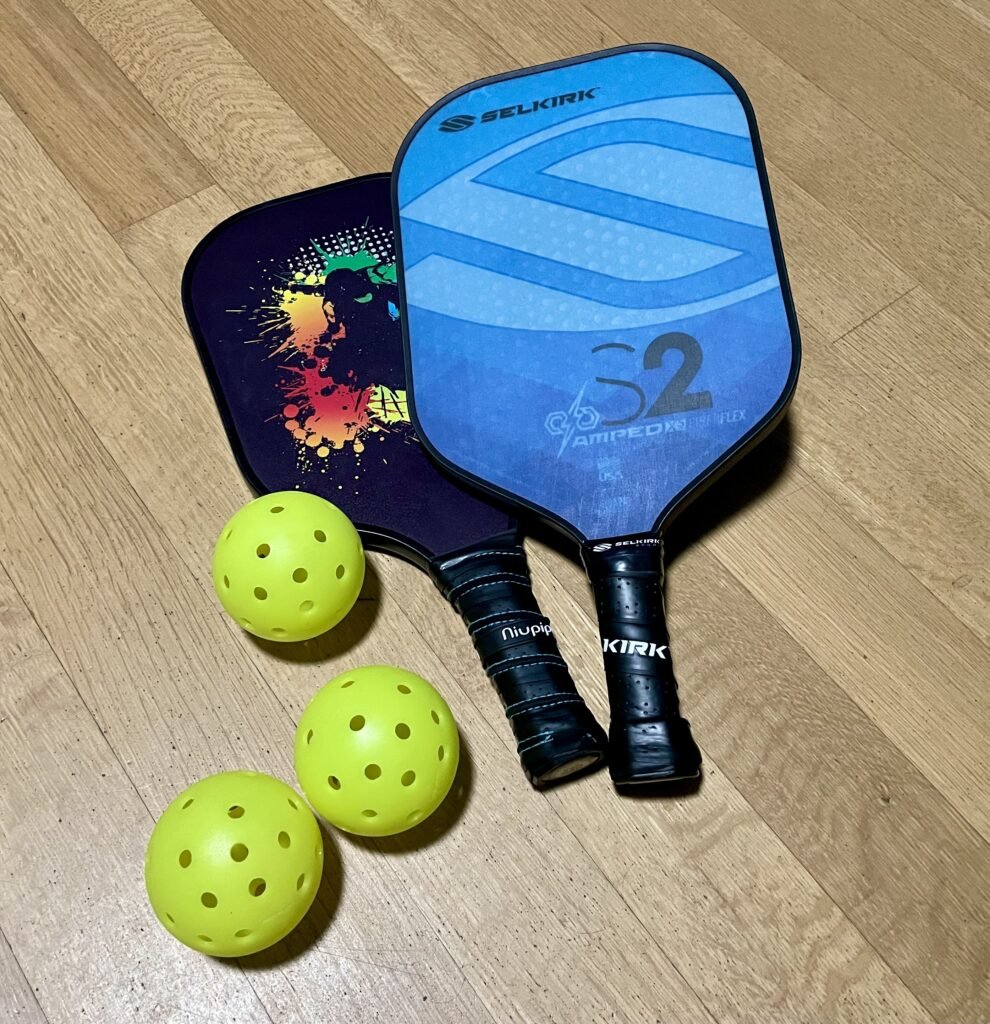
Determining the right size pickleball paddle involves considering both grip size and overall paddle dimensions. Measure your hand’s circumference to find the appropriate grip size, typically ranging from 4 to 4.5 inches. A proper grip ensures comfort, control, and minimizes the risk of injury. As for paddle dimensions, consider your playing style and preferences. A wider body paddle offers a larger sweet spot, making it forgiving for beginners. Standard-sized paddles are versatile and suitable for all-around play. Teardrop-shaped paddles prioritize power, while oversized paddles provide an even larger hitting surface. Ultimately, choosing the right size involves a balance between grip comfort and the paddle’s design to complement your playing preferences on the pickleball court.
Is there really a difference between pickleball paddles?
Yes, there are significant differences between pickleball paddles that can impact your gameplay. Paddles vary in core material, face composition, weight, grip size, and shape, influencing factors such as power, control, and maneuverability. The core material, whether polymer, Nomex, or aluminum, affects the paddle’s feel and responsiveness. Face materials like graphite or composite blends impact the balance between power and control. Weight determines maneuverability, with lighter paddles favoring finesse players and heavier paddles providing more power. Grip size ensures comfort and control, while paddle shape influences play style. These differences cater to various player preferences and skill levels, emphasizing the importance of choosing a paddle that aligns with your playing style for an enhanced and enjoyable pickleball experience.
Do you want 16mm or 13mm pickleball paddle?
The choice between a 16mm and 13mm pickleball racket primarily depends on personal preference and playing style. The thickness of a pickleball paddle’s core, measured in millimeters, affects the paddle’s feel and performance. A 16mm paddle generally offers a softer feel and more control over shots. It can be preferred by players who prioritize finesse, touch, and precise placement on the court. On the other hand, a 13mm paddle provides a firmer feel, potentially generating more power in shots. Players who prefer a more aggressive playing style or rely on powerful drives may find a 13mm paddle more suitable. Ultimately, the decision should align with your playing preferences, whether you prioritize control or power on the pickleball court.

Paddle Power: Navigating Pickleball Choices
Choosing the right pickleball paddle is crucial for your performance on the court. Several factors come into play when selecting a paddle, including material, weight, grip size, shape, and face texture. Here’s a detailed guide to help you pick out the perfect pickleball paddle:
Material
Core Material
Polymer Core
The Polymer Core in a pickleball paddle is synonymous with a playing experience characterized by a softer feel and heightened control. Comprising a flexible and responsive material, the polymer core excels in providing players with a paddle that offers a gentle touch upon ball impact. This softer feel allows for an enhanced level of control, enabling players to finesse shots with precision and accuracy.
Players who appreciate subtlety in their game, prioritizing strategic placements and finesse over sheer power, often gravitate towards paddles with a polymer core. Whether you are executing delicate dinks at the net or orchestrating well-placed lobs, the polymer core contributes to a responsive and controlled gameplay experience. This core material is a popular choice among those who relish the artistry of pickleball, allowing them to masterfully guide the ball across the court with a nuanced touch.
Nomex Core
The Nomex Core in pickleball paddles is synonymous with a formidable combination of a harder feel and heightened power. This core material is renowned for its ability to impart a solid, firm sensation upon ball contact, creating a paddle that resonates with players seeking a more robust and assertive playing experience.
The inherent stiffness of the Nomex Core translates into increased power generation, making it an ideal choice for players who favor an aggressive and dominating style on the court. The paddle’s capacity to deliver powerful shots allows players to control the pace of the game, unleashing authoritative drives and strategic plays.
For those who thrive on the intensity of fast-paced rallies and aspire to command the court with potent shots, the Nomex Core stands as a reliable choice, offering a paddle that embodies the dynamic fusion of a harder feel and amplified power in the world of pickleball.
Aluminum Core
The aluminum core, a less common choice in the realm of pickleball paddles, stands out for its distinctive characteristics. While it is rarely used compared to popular alternatives like polymer and Nomex cores, the aluminum core offers a unique playing experience. This core material contributes to the creation of a heavy and powerful paddle, making it suitable for players who prefer a paddle with substantial weight and the ability to generate robust shots.
The weightiness of an aluminum core paddle can translate into a forceful impact on the ball, potentially appealing to those who prioritize power over finesse on the pickleball court. However, due to its limited popularity and the availability of more modern core materials that offer a balanced blend of power and control, the aluminum core is not as widely embraced by players seeking a versatile and well-rounded playing experience.
Face Material
Graphite
A lightweight pickleball racket epitomizes the essence of agility and precision on the court. By minimizing heft, these paddles enhance maneuverability, allowing players to react to the dynamic movements of the game swiftly. The lightweight nature of the paddle contributes to a responsive feel, ensuring that players can execute quick, controlled strokes with ease. This responsiveness is especially beneficial for players who value finesse, accuracy, and rapid adjustments during gameplay.
Furthermore, the combination of a lightweight design and responsive characteristics fosters an environment where excellent control becomes a hallmark of the paddle. Players can confidently guide the ball, dictate the pace of the game, and execute intricate shots with finesse. Ultimately, a lightweight paddle with responsive qualities offers a dynamic and controlled playing experience, catering to players who seek precision and agility as they navigate the intricacies of the pickleball court.
Composite
Pickleball paddles featuring a composite construction typically blend materials like fiberglass and carbon fiber, creating a harmonious combination that strikes a delicate equilibrium between power and control. The incorporation of fiberglass adds flexibility and responsiveness to the paddle, allowing for enhanced control during precise shots. On the other hand, the inclusion of carbon fiber provides rigidity and power, enabling players to execute stronger and more dynamic strokes on the court.
This composite synergy caters to a broad spectrum of player preferences, making these paddles well-suited for those seeking a versatile and balanced playing experience. The composite construction ensures that players can enjoy the benefits of both power and control, making it an ideal choice for individuals who appreciate the nuances of strategic finesse as well as the capability to unleash authoritative shots when the situation demands.
Wood
Heavier and less common, pickleball paddles with increased weight are frequently favored by recreational players seeking a specific playing experience. The additional weight imparts a sense of solidity to the paddle, contributing to a more powerful shot delivery. While this characteristic may be advantageous for players who prioritize strength in their strokes, the heavier paddles are generally less maneuverable than their lighter counterparts.
Recreational players, who may value a more laid-back and casual approach to the game, often appreciate the stability and heft provided by these paddles. The added weight can contribute to a comfortable and controlled feel during gameplay. However, it’s important to note that the preference for heavier paddles is subjective, and individual playing styles and physical capabilities should be considered when choosing a paddle weight that aligns with one’s overall enjoyment and satisfaction on the pickleball court.
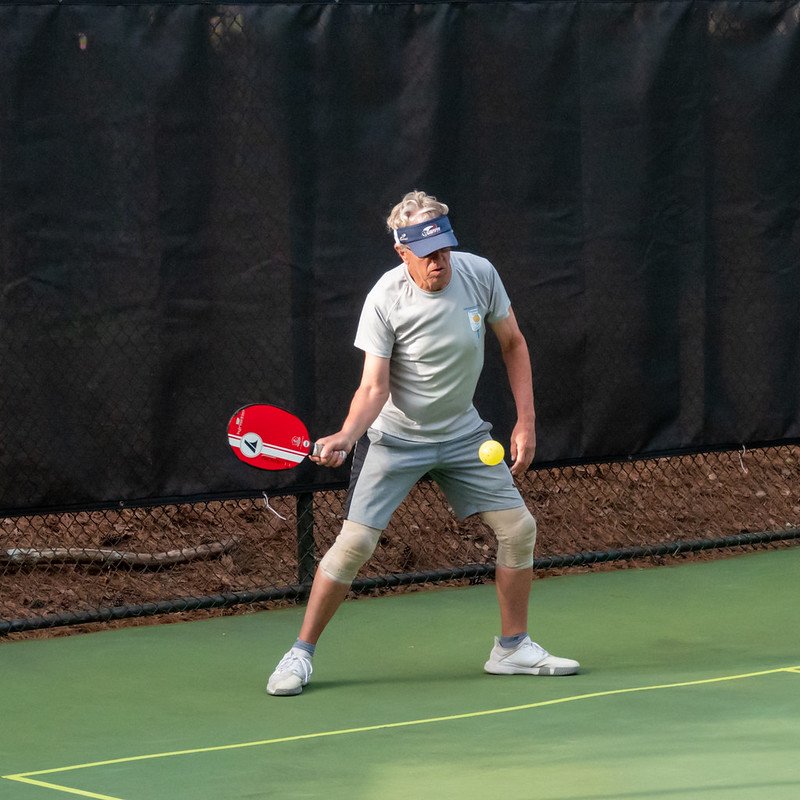
Weight
The weight of your pickleball paddle is a critical factor that can significantly impact your performance on the court, making it essential to select a weight that aligns with your playing style and preferences. Paddle weights typically span a range from 6 to 14 ounces, offering players a spectrum of options to suit their individual needs.
Lighter paddles, falling within the 6-8 ounce range, are prized for their enhanced maneuverability. These paddles cater to finesse players who prioritize quick and precise movements. The lower weight allows for swift reactions at the net, making them ideal for players who rely on finesse shots, quick volleys, and strategic placement.
Conversely, the heavier end of the spectrum, ranging from 8.5 to 14 ounces, caters to a different set of preferences. Heavier paddles are favored by those who emphasize power in their gameplay, delivering strong and aggressive shots. The additional weight contributes to the force behind each hit, making them suitable for players who thrive on baseline rallies and forceful drives.
Ultimately, the weight you choose becomes a personalized decision, reflecting your playing style, strength, and the type of shots you prefer. Whether you opt for a lighter, more maneuverable paddle or a heavier, power-focused one, finding the right balance ensures that your paddle complements and enhances your skills on the pickleball court.
Grip Size
Selecting the appropriate grip size for your pickleball racket is a crucial step towards optimizing your playing experience. Paddle grips are available in a range of sizes, typically falling between 4 to 4.5 inches in circumference. The significance of finding the right grip size lies in achieving a harmonious balance between comfort, control, and injury prevention.
To determine your ideal grip size, begin by measuring the circumference of your hand. This can be done by wrapping a measuring tape or using a ruler around the fullest part of your hand, typically just below the knuckles. The aim is to find a size that feels comfortable in your hand, offering a secure and natural grasp on the paddle.
A proper grip size is instrumental in enhancing control over your shots. It allows for a more precise feel during gameplay, promoting accuracy and finesse in your strokes. Moreover, the right grip size reduces the risk of injury, as a well-fitted grip minimizes strain on your hand, wrist, and forearm.
Finally, the comfort and control provided by a well-fitted grip contribute significantly to your overall performance on the pickleball court. Taking the time to measure and select the appropriate grip size ensures that your paddle becomes an extension of your playing style, facilitating a more enjoyable and effective game.
Grip Style
Cushion Grip
A pickleball paddle’s grip is more than just a point of contact; it is a critical interface between the player and the game. When it comes to softness and comfort, certain grip materials excel in providing a plush feel, ensuring a comfortable and enjoyable playing experience. These grips are designed with player comfort in mind, offering a soft, cushioned surface that minimizes hand fatigue during extended play.
Moreover, their ability to absorb sweat effectively adds another layer of functionality. As the game intensifies, and players exert themselves on the court, these grips work diligently to wick away moisture, maintaining a secure hold and preventing slippage. This dual functionality—soft and comfortable, coupled with efficient sweat absorption—contributes significantly to player confidence, allowing for better control and focus, ultimately enhancing the overall enjoyment of the pickleball game.
A pickleball paddle’s grip is more than just a point of contact; it is a critical interface between the player and the game. When it comes to softness and comfort, certain grip materials excel in providing a plush feel, ensuring a comfortable and enjoyable playing experience. These grips are designed with player comfort in mind, offering a soft, cushioned surface that minimizes hand fatigue during extended play.
Tacky Grip
The tacky grip is a game-changer in the world of pickleball paddles, offering a distinctive advantage in control, particularly in hot and humid playing conditions. This specialized grip provides players with a firmer feel during gameplay, promoting a confident and secure hold on the paddle.
In hot or humid weather, players often experience challenges with grip stability due to increased perspiration. The tacky grip addresses this concern by enhancing the paddle’s adherence to the player’s hand. This results in a reliable and consistent feel, allowing players to maintain precise control over their shots even when faced with challenging weather conditions.
The tacky grip’s ability to resist slipping or shifting during play not only contributes to better shot accuracy but also instils a sense of confidence in the player’s ability to execute manoeuvres effectively. Whether you’re engaged in a fast-paced rally or navigating the court strategically, the tacky grip ensures that your connection with the paddle remains steadfast, enhancing your overall performance on the pickleball court.

Shape
Pickleball paddle shapes come in various designs, each catering to specific playing styles and skill levels. The Wide Body design stands out for its larger hitting surface, offering a more forgiving experience for beginners. This design increases the chances of connecting with the ball, making it an excellent choice for those still mastering their strokes.
The Standard Shape, with its balanced and versatile design, suits players engaged in all-around play. It provides a reliable performance for various shots and playing scenarios, making it a popular choice among players seeking adaptability on the court.
For those who prioritize power and enjoy a slightly longer reach, the Teardrop Shape is ideal. This design concentrates the paddle’s mass toward the bottom, emphasizing powerful drives and smashes, offering an advantage to players with an aggressive playing style.
The Oversized design takes forgiveness to another level, providing an even larger sweet spot. Particularly beneficial for beginners, this design increases the likelihood of making successful contact with the ball, boosting confidence and enjoyment on the pickleball court.
Edge Guard
Edgeless
Opting for an edgeless pickleball paddle introduces a distinct design choice that enhances the playing experience in several ways. Paddles without an edge guard offer a seamless hitting surface, eliminating any potential disruptions caused by the traditional protective rim. This design creates a more uniform striking area, allowing players to make shots with confidence and precision right up to the edges of the paddle.
The absence of an edge guard not only contributes to a sleek and modern aesthetic but also reduces the overall weight of the paddle. This feature can appeal to players who prioritize maneuverability and a lightweight feel during play. However, it’s important to note that while edgeless paddles provide an extended sweet spot and a unique feel, players should be mindful of potential paddle-to-court contact since there’s no protective edge. Ultimately, the choice of an edgeless paddle reflects a preference for an uninterrupted, fluid hitting surface and a desire for an unencumbered connection with the ball on the pickleball court.
Standard Edge Guard
The Standard Edge Guard is a crucial feature in pickleball paddles designed to protect against potential damage, particularly in the face of accidental impacts against the court surface or collisions with other paddles. Serving as a robust shield, this edge guard encompasses the perimeter of the paddle, acting as a buffer that absorbs the force of unintended hits. It effectively safeguards the structural integrity of the paddle, preventing chips, dents, or fractures that could compromise its performance.
This protective element is especially valuable in the fast-paced and dynamic nature of pickleball, where rallies involve quick movements and rapid exchanges. The Standard Edge Guard ensures the durability of the paddle, extending its lifespan and preserving its overall functionality. By minimizing the risk of damage, players can focus on their game without concern for potential wear and tear, allowing them to fully immerse themselves in the exhilarating world of pickleball with confidence in their equipment’s resilience.
Texture
The surface texture of a pickleball paddle’s face significantly influences your ability to execute shots with precision and spin. A Smooth Face, characterized by its sleek, flat surface, ensures a clean and consistent hit. This feature is particularly advantageous for players who value accuracy and control in their gameplay. The smooth face allows the ball to glide smoothly off the paddle, making it suitable for players who engage in strategic rallies and precise shot placements.
On the other hand, a Textured Face introduces a deliberate element of grip to the equation. This texture enhances your ability to impart spin on the ball, adding a layer of finesse and control to your shots. Whether executing slices, topspins, or side spins, the textured face provides the necessary traction to manipulate the ball’s trajectory, making it a preferred choice for players who incorporate spin into their playing style. Ultimately, the choice between a smooth or textured face boils down to individual playing preferences and the desired level of spin control on the pickleball court.

Noise Level
Being attuned to the noise regulations within specific communities or facilities is a crucial factor in the selection of a pickleball paddle. Some locales impose restrictions on the amount of sound generated during play, and this consideration can significantly impact the choice of equipment.
Pickleball paddles vary in their acoustics, producing different levels of sound upon contact with the ball. Paddles with a quieter design are often preferred in noise-sensitive environments to ensure compliance with regulations and maintain a harmonious playing atmosphere. Players need to be aware of and respect these regulations, as excessive noise can disrupt neighboring activities or disturb the peace.
Therefore, when selecting a paddle, players should take into account not only the paddle’s performance characteristics but also its noise level. Striking a balance between an effective game and adherence to noise regulations ensures an enjoyable playing experience for everyone involved in the pickleball community.
Brand and Reviews of Pickleball Paddle
When delving into the world of pickleball paddle selection, it’s paramount to consider reputable brands that have garnered positive reviews from players. Opting for a well-established and respected brand ensures a higher likelihood of acquiring a paddle that aligns with your expectations. Customer feedback serves as a valuable compass, offering insights into the real-world performance, durability, and overall satisfaction of a particular paddle.
Scouring through reviews allows you to tap into the collective experiences of fellow players, shedding light on nuances such as paddle feel, responsiveness, and longevity. Look for patterns in feedback to identify if a paddle consistently meets the expectations of players with similar playing styles or preferences. By heeding the experiences of others, you can make a more informed decision, increasing the likelihood of finding a pickleball paddle that not only suits your needs but also enhances your on-court performance.
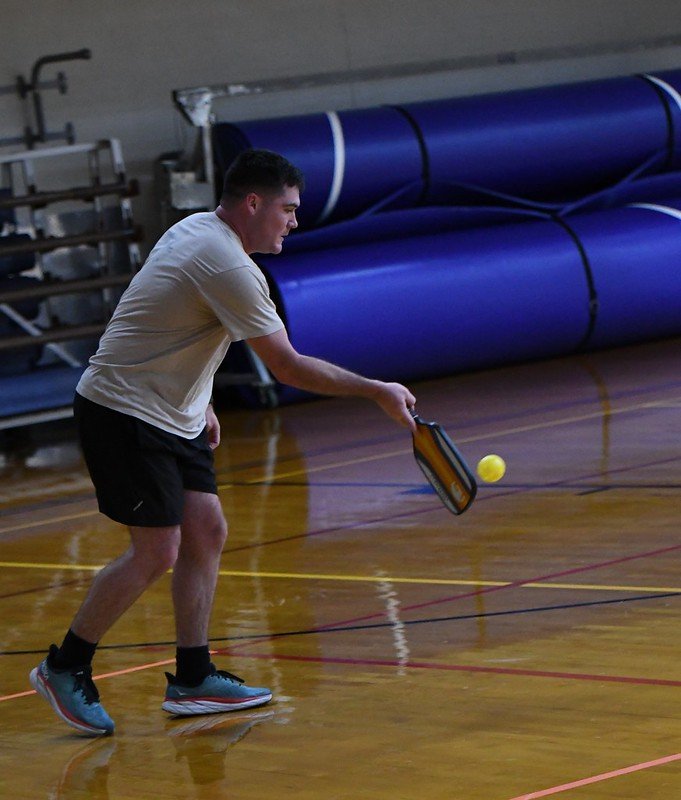
Demo Paddles
Before committing to a pickleball paddle, it’s highly advisable to explore your options through hands-on experience. Trying out different paddles before making a final decision provides invaluable insights into how each paddle feels during actual gameplay. Many sporting goods stores and pickleball clubs offer demo programs, allowing you to test various paddles without the full commitment.
Participating in demo programs enables you to assess factors like weight, grip comfort, and overall paddle performance. It allows you to gauge how a paddle suits your playing style, whether you lean towards finesse, power, or a balance of both. This hands-on approach empowers you to make a well-informed decision tailored to your preferences, ensuring that the chosen pickleball paddle complements your skills and enhances your on-court experience. Take advantage of demo opportunities to find the perfect paddle that feels like a natural extension of your playing abilities.
Remember that personal preference plays a significant role in choosing a pickleball paddle. Take the time to test different options and find the paddle that suits your playing style and comfort preferences.

